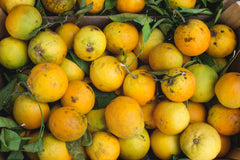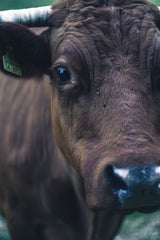 Because we still have not found a ''perfect'' formula in terms of low ecological impact textiles, several initiatives have emerged over time and much research is being done on this subject.
Because we still have not found a ''perfect'' formula in terms of low ecological impact textiles, several initiatives have emerged over time and much research is being done on this subject.
At the moment, most of the natural textiles we use come directly from crops (e.g. bamboo, cotton, linen, etc.) or from plant pulp which can have a significant negative impact on forests.
Banana clothes!

Banana (sweetened or in the form of plantain) is one of the staple foods of several cultures. It is one of the important natural fibers found abundantly in India, Sri Lanka, some African countries and Latin America. It is one of the oldest cultivated plants in the world. K. Murugan , an Indian mechanical engineer, observed that once the fruit was harvested, the banana trees were cut down and then left to rot on the spot. For him, this was not the best way to treat them and he saw the plants as a natural resource to be exploited. He therefore innovated by manufacturing a machine to transform the raw material of the banana tree into silk.
In addition to being eco-responsible, banana silk has many qualities. It is lightweight, biodegradable, the resulting fabric is silky, flexible and moisture wicking. The silky textile that emerges is equivalent to that of worm silk in its luster and resistance.
The weak point of banana silk does not only lie in the higher degree of difficulty in extracting the fibers compared to other natural fibers. The banana tree is a plant that is at risk from several diseases. We have even read that the most consumed species of banana could tend to disappear because it is subject to a disease caused by a fungus (Panama disease or Fusarium wilt).
Citrus residue textiles

This is a very original idea that we like because of its eco-responsible and global nature. Make yarn and textiles from the peel of citrus fruits!
Imagine the global amount of waste generated by the consumption of citrus juice! In Italy alone, it is estimated that emissions from this agri-food industry amount to 700,000 tonnes per year. The equivalent of 3,500,000 whole oranges! The equivalent of 140,000 elephants!
The search for waste recovery in this sector is therefore essential and brilliant! This is the reason for the Italian Orange Fiber project. No surprise that this is emerging from this country. It’s a beautiful junction between two of their cultural and economic pillars: food and fashion!
Fabrics made with orange peel are formed from a silky yarn that can be mixed with other materials. When used in its purest form, 100% citric textile exhibits a silky, lightweight feel. The fabric can be opaque or shiny depending on desires and needs.
Soy textiles

Soy is also considered a staple food, particularly in Asian countries. Soy-based textiles are often called vegetable cashmere. Unlike banana and orange peel textiles, soy fabric comes from soy beans, which are themselves edible. Soy beans contain natural fibers within each bean. When these fibers are removed from the bean, they are too coarse to spin and therefore must be processed.
Although textiles come from soybeans, most of them come from food processing residues, either from the extraction of its oil or from the manufacturing of tofu. Additionally, any fibers that are not of sufficient quality to be used in fabric can be used as livestock feed. Finally, it is also a renewable and biodegradable resource (so much so that clothing designed with soy textiles could be composted!).
Soy textiles are soft, easy to care for and absorb dyes quickly, so require fewer dyes.
Cow's milk textiles

Yes, there is a textile made from cow's milk! German company QMilk developed a technique by taking fermented milk, drying it into protein powder, mixing it with water and other natural ingredients, extruding it all to release a substance fluffy and finally spinning it. The company would only use expired milk and use only 2 liters of water to create one kilo of fabric.
The soft fabric that emerges absorbs moisture and is also temperature regulating. It is also antibacterial and dermatological tests show that it is excellent for the skin.
Several questions can be asked on this subject. The impact of cattle grazing has been widely demonstrated on the environment. Shouldn't we instead address the issue of milk loss? By reducing the quantities produced and limiting losses, it seems to us that it would be much more ecological!
Handcrafted textiles
There are also a multitude of other rather original textiles of artisanal design. We are talking here about textiles made from coffee, shellfish, fish scales, red wine deposits, fermentation of red wine, corn... Most of these techniques are still to be developed and some are to be questioned. Do we want to develop new techniques that will monopolize more of our agricultural land? However, all those allowing the recovery of residues give us hope!
We enthusiastically welcome all new ideas to reduce the environmental impact of clothing and will follow innovations in the field with optimism and curiosity!














0 comments